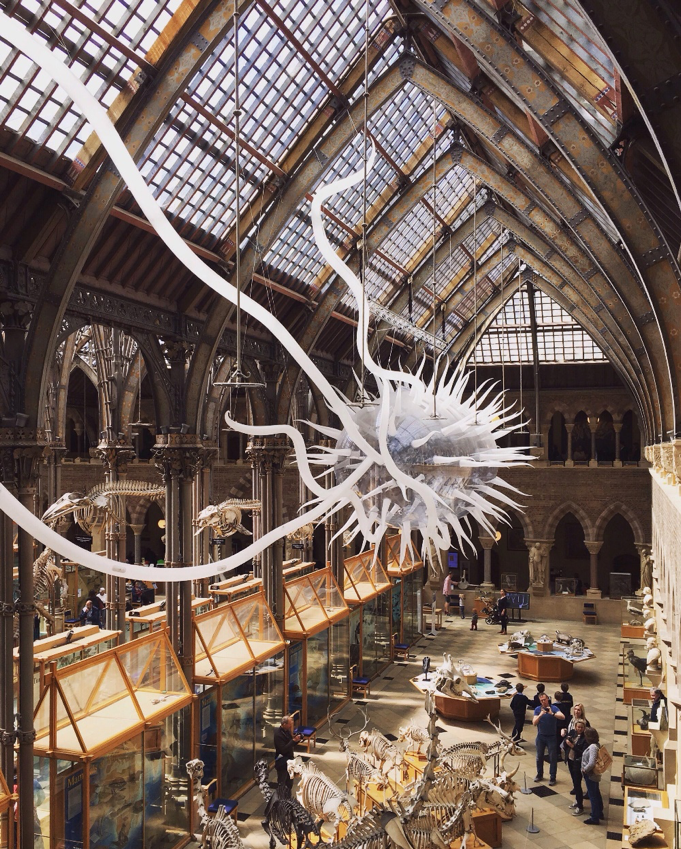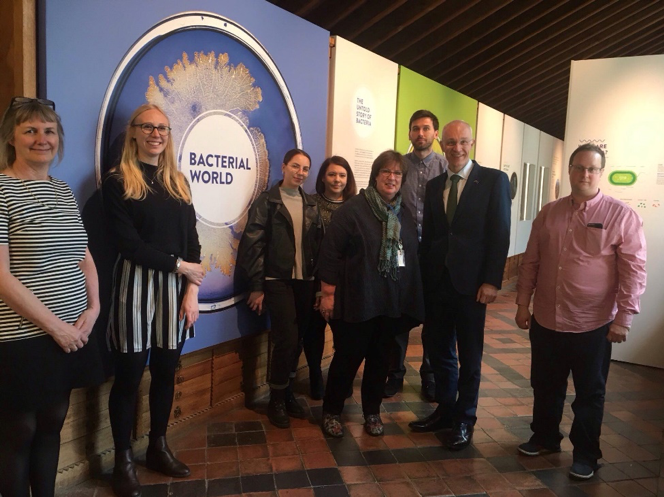Bacterial World Exhibition at the Oxford Museum of Natural History
Posted on May 16, 2019 by Ellen Hinkley
Last week, a group of Microbiology Society staff visited the Bacterial World exhibition at the Oxford University Museum of Natural History, and were lucky to be accompanied by our President, Judith Armitage, who was lead research consultant for the exhibition.
It was only an hour-long journey, but when we stepped off the train in Oxford, it felt like we’d travelled a long way from London. The sun was shining, and we walked through the picturesque streets, dotted with university colleges and an array of colourful, if slightly battered looking bikes.

The inflatable E. coli
The museum itself was imposingly large, and as we walked in it felt like we were entering a church. Cast iron and stone columns, decorated with a variety of intricate, botanically-inspired features, extended into arches that supported a glass roof. However, the impressive structure of the building wasn’t the first thing that caught my eye. Instead, it was the huge inflatable E.coli suspended above us, with giant flagella hooked around these architectural features.
On the upper floor of the museum, we got an even better look at the giant floating microbe, as well as a glimpse of the exhibition itself.
We were greeted there by Professor Judith Armitage, accompanied by the Deputy Director and Head of Public Engagement at the museum, Janet Scott. Janet explained a bit about how and why the exhibition had been put together. In addition to Judith, the museum worked with several scientists, designers and even computer programmers to promote the good that bacteria can do, or as Judith put it, to show that “bacteria formed the Earth as we know it, and continue to shape it”.
After a quick group picture, we were let loose on the exhibition, with Judith on hand to answer any questions we may have had.

(Left to right): Gaynor, Ellen, Eve, Erin, Judith, Michael, Peter and Jamie
It was fascinating and varied, ranging from asking questions such as ‘What are bacteria?’ to looking at how they can be harnessed to solve the world’s problems. There were interactive features such as a ‘Gut Wars’ game and several ‘Ask a scientist’ videos, as well as artefacts, images and diagrams. Considering that the space the exhibition was housed in was relatively small, there was a huge amount of information, which was displayed in a bite-sized and engaging way.


